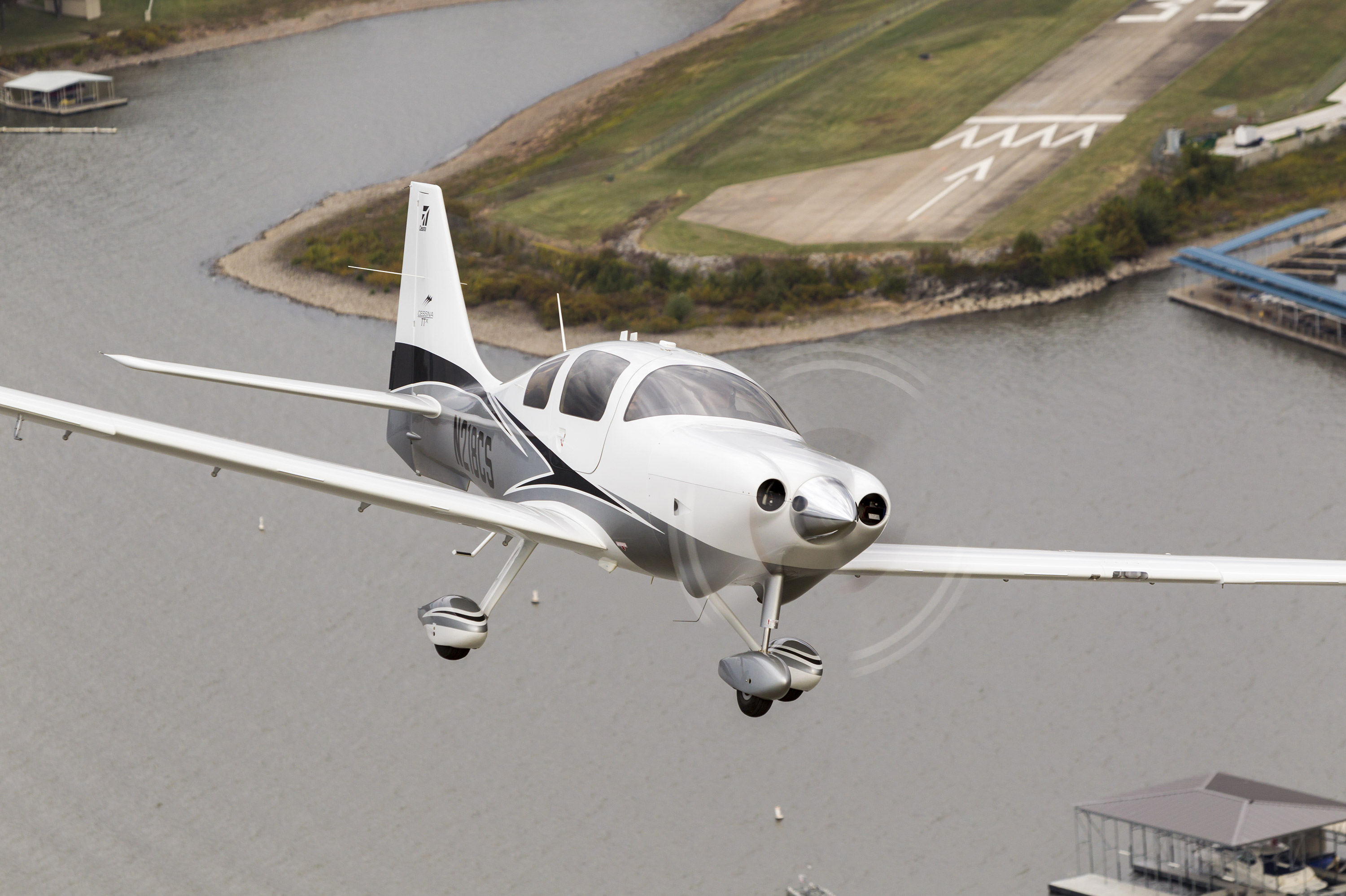Adapted Excerpts from The Pilot’s Guide to Air Traffic Control

By Andy Watson
Air Traffic Control Specialist
Andy Watson, author of the recently released book The Pilot’s Guide to Air Traffic Control, is both a veteran air traffic controller and general aviation pilot. Because only a small percentage of air traffic controllers are also pilots, he brings unique insight on how ATC and pilots interact and how they can improve their communication by better understanding each other’s roles, responsibilities, and perspectives.
The following are adapted excerpts from Andy’s book that he has graciously given permission to reprint for the benefit of our members. We thank him for contributing to the safety of the general aviation community.
You Are the Pilot in Command
The following story illustrates why pilots need to know that, while the air traffic controller’s job is to move planes through airspace as quickly and efficiently as possible with clear, direct instructions, the controller can modify instructions as needed to accommodate a pilot’s or plane’s limitations. Controllers aren’t necessarily aware of those limitations, however, so pilots need to be clear, prompt, and assertive in communicating them to ATC.
At Cleveland ARTCC, a controller had two aircraft that would eventually conflict with each other at 11,000 feet MSL. The controller asked one of the aircraft, a Cirrus SR-22, if they could accept 13,000 feet MSL, and the pilot replied they could do it for a little while. The controller issued the climb clearance and considered the matter resolved.
About 20 minutes later, the pilot asked how much longer they needed to remain at 13,000 feet. The controller responded that they had passed the original traffic he moved them for, but there is additional traffic, so he will show 13,000 feet as their final.
The pilot responded that they will eventually need to descend, and the controller replied that he had their request — and went about other business.
About five minutes later, the pilot asked if they could descend yet. The controller got a little upset — as five minutes in an ARTCC sector is nothing! The controller reminded the pilot that he had his request for lower.
At that point, the controller started to complain to the rest of us in the area. Of course, he didn’t mention how long the Cirrus had been at 13,000 feet, but I suspected I knew why the pilot was asking.
Concerned, I asked, “How long has it been since he took the climb to 13,000 feet MSL?
He gave me a blank stare, so I rephrased my question.
“Is it getting close to the 30-minute mark since you climbed him?”
“Yes, probably about a half-hour.”
“I bet he doesn’t have oxygen on board,” I said with a cautious tone. “Regulations only allow pilots to be between 12,500 –14,000 feet MSL for 30 minutes or less.”
The controller looked completely stunned.
Promptly, he asked the pilot if he needed to descend due to negative oxygen on board, to which the pilot answered in the affirmative. The controller then vectored the other aircraft that was traffic for the Cirrus and descended them back to 11,000 feet MSL.
Most controllers do not know about many of the regulatory, aircraft, or pilot’s personal limitations for any given situation. It might have helped the Cirrus pilot if he answered the original question by saying he could accept 13,000 feet for only 30 minutes or less. He could have said due to having no supplemental oxygen available, but the reason isn’t necessary. If he had, the controller could have planned better and got the Cirrus descended sooner rather than later, probably with a smaller turn for the aircraft at 12,000 feet.
I would estimate only a small percentage of controllers are pilots — nor do they need to be. Therefore, as the pilot, you need to realize there are times when pilot jargon is not understood. In those situations, try to communicate a basic but brief (emphasis on brief!) description of what you are trying to say. Even if, at the 25-minute mark, the Cirrus pilot would have said that he would legally have to descend due to negative oxygen in five minutes or less, it would have cleared things up for the controller.
Either way, you are the pilot-in-command. You are the final authority for the safety of your aircraft. If a controller is giving you a clearance that jeopardizes the safety of your aircraft, simply tell them you are unable and offer what you could do instead.
Preventing Spatial Disorientation
During one of my previous work assignments, I worked in Air Traffic Safety Oversight at FAA headquarters in Washington, D.C. One of my job assignments was to attend the daily meeting at the Office of Accident Investigation and Prevention, discussing all the aviation-related accidents and incidents from the day or weekend before.
During one meeting, the group was briefed on a crash of a Pilatus PC-12 that departed Amarillo, Texas, under IFR at 11:48 p.m. the previous night. The cloud ceiling was reported at 700 feet broken and 1,200 feet overcast. After the aircraft departed, the controller noticed the plane was not squawking the correct code, so he told the pilot to reset the transponder and squawk 4261. The pilot tuned in the correct transponder code, and the controller instructed him to contact departure.
While still turning on course, the pilot checked in to departure’s frequency, climbing to 6,000 feet (2,395 AGL). The controller radar-identified the aircraft and, about one-and-a-half minutes later, informed the pilot he was no longer receiving the aircraft’s transponder. The pilot did not respond, and radar contact was lost shortly after.
At that point in the briefing, the flight surgeon spoke up and said this accident was an exact scenario the FAA uses for one its spatial disorientation simulators called “The Vertigon.” He explained that the Vertigon is a large moving box that has a cockpit simulator inside where the pilot/student sits as it simulates IMC. An instructor issues ATC instructions to the student through the intercom, and as the student is flying the simulator, the instructor initially directs the student to make a turn in either direction. Once the student is established in the turn, the instructor gives the student one of three tasks: change radio frequency, change transponder beacon code, or pick up a pen off the floor. Each one of those tasks requires students to move their heads. Once a person is in a bank and moves their head without having a visual reference to the ground or horizon, 100 percent of the time, that person will experience spatial disorientation!
If a controller issues a clearance that would force you to move your head while in a bank, simply tell ATC to “stand by.” I realize many pilots have never told ATC to stand by; it goes against what feels normal. Resist the temptation to comply automatically. Controllers tell pilots to stand by all the time. The phrase is perfectly acceptable for pilots to use as well.
The NTSB final report on the Pilatus PC-12 accident was published with the probable cause: “The pilot’s loss of airplane control due to spatial disorientation during the initial climb after takeoff in night instrument meteorological conditions and moderate turbulence.”
The accident pilot held an airline transport pilot certificate with ratings for single- and multi-engine aircraft for both land and seaplanes. He was also a CFI, CFII, and multiengine instructor and logged 5,866 total hours. If such a highly experienced professional pilot succumbed to spatial disorientation, imagine the level of risk you are susceptible to when flying IMC or during a dark night.
According to the FAA brochure, “Spatial Disorientation: Why You Shouldn’t Fly By the Seat of Your Pants,” between 5 and 10 percent of all general aviation accidents can be attributed to spatial disorientation, and 90 percent of these accidents are fatal.
My sympathy goes to the family members and friends of the victims of this tragedy. I hope pilots can learn from this accident in order to avoid spatial disorientation.

Ditching the “… With Request” Verbiage
Controllers get many requests for altitude changes and turns during a pilot’s initial check-in and, generally, those aircraft are still outside the new controller’s airspace. So if you are getting bumped around, have a cloud buildup ahead, or whatever issue you may have, please say that reason with your initial request and we will do our best to help.
When I was about halfway through my IFR pilot training, I started to notice other pilots using the term, “…with request.” As it seemed like a polite way to communicate with ATC, I started using it for every request I made. But once I started working as a radar controller at Cleveland ARTCC, I had pilots using this technique, and I realized it is a giant waste of time for both the controllers and pilots.
Let’s think about it further. If you as the pilot key up the frequency and say, “Approach, Piper 12345, with request.”
The controller then says, “Piper 12345, say request.”
You respond by saying, “Approach, Piper 12345, requesting to climb to six thousand.”
Then the controller says, Piper 12345, climb and maintain six thousand.”
The pilot reads it back, “Piper 12345, leaving four thousand for six thousand.”
Finally, after five transmissions, this back-and-forth is over.
Your goal as a pilot should be to make your radio transmissions as short, clear, and concise as possible. I realize it doesn’t seem like it takes that much longer, However, the extra time involved seems like an eternity when a controller is busy.
If we get rid of the first and second transmissions, does it change what is being communicated to ATC?
No, it does not. Frankly, I believe it is more considerate and polite to ATC by skipping the first two transmissions and starting with the third to make your altitude change request.
Even though I tell people not to use the “…with request” technique, you still don’t want to key up on an initial transmission to make a long request or one with multiple components. In these situations, the best technique is to give a quick highlight of what you’re requesting.
For example, suppose you are planning to fly multiple approaches. In that case, all you need to say is, “Approach, Piper 12345, two zero miles northeast of Charleston at three thousand, requesting multiple practice approaches.”
More Stories and Information Available in The Pilot’s Guide to Air Traffic Control
These adapted excerpts are just a small sampling of the helpful content pilots will find in The Pilot’s Guide to Air Traffic Control. The book features 31 chapters covering a wide range of practical topics and four appendices, including Phraseology — using language that’s clear, concise, and professional. This section provides best practices for verbiage and is illustrated with anecdotes from Andy’s experience to help pilots hone their radio skills.
Andy Watson is an air traffic controller and general aviation pilot. He has been flying since he was 8 years old and has earned a Bachelor of Science in Aviation from the University of North Dakota. Working as Air Traffic Control Specialist or Front-Line Manager, Andy has served throughout the eastern United States at several FAA facilities, including Cleveland Air Route Traffic Control Center (ARTCC), Chicago ARTCC, Charleston Terminal Radar Approach Control (TRACON), and Washington ARTCC. In addition, Andy was an ATC subject matter expert for the FAA’s Air Traffic Safety Oversight (AOV) at FAA Headquarters in Washington, D.C. As a member of the Civil Air Patrol, Andy volunteers his time as a Search & Rescue / Disaster Relief Mission pilot.
Excerpts adapted with permission from The Pilot’s Guide to Air Traffic Control by Andy Watson, ©Andy Watson, International, LLC, 2022. All rights reserved. For more information or to order a copy, visit www.atcBook.com.
DISCLAIMER: The views expressed are the sole opinions of Andy Watson International, LLC, and are not necessarily the opinions of the Federal Aviation Administration and Cessna Owner magazine.





